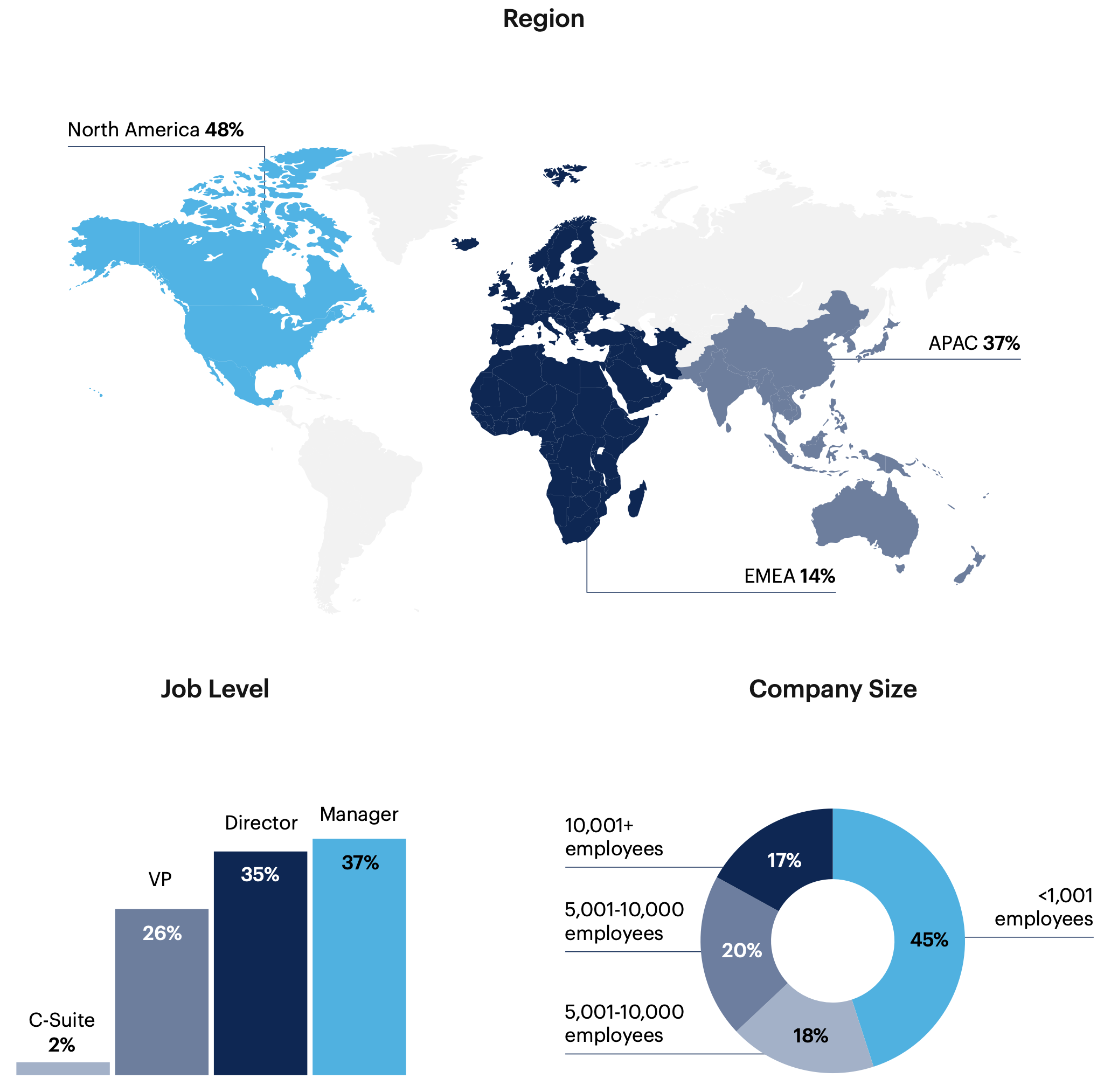Building Digital Resilience
Digital resilience is an organization’s ability to rapidly adapt to business disruption, while minimizing customer harm, reputational damage and financial loss. What is the state of digital resilience strategies?
One minute insights:
 The vast majority have a defined digital resilience strategy in place
The vast majority have a defined digital resilience strategy in place The threat of cyberattack is driving adoption and all respondents have or are building cybersecurity response plans
The threat of cyberattack is driving adoption and all respondents have or are building cybersecurity response plans For most, digital resilience is strongest in organizations’ brand reputations or leadership
For most, digital resilience is strongest in organizations’ brand reputations or leadership Leaders agree that digital resilience is a requirement for modern businesses
Leaders agree that digital resilience is a requirement for modern businesses The biggest challenges with attaining digital resilience are cost, tooling and skills gaps
The biggest challenges with attaining digital resilience are cost, tooling and skills gaps
Almost all have a defined digital resilience strategy in response to actual or potential cyberattacks
Does your organization currently have a defined digital resilience strategy in place?
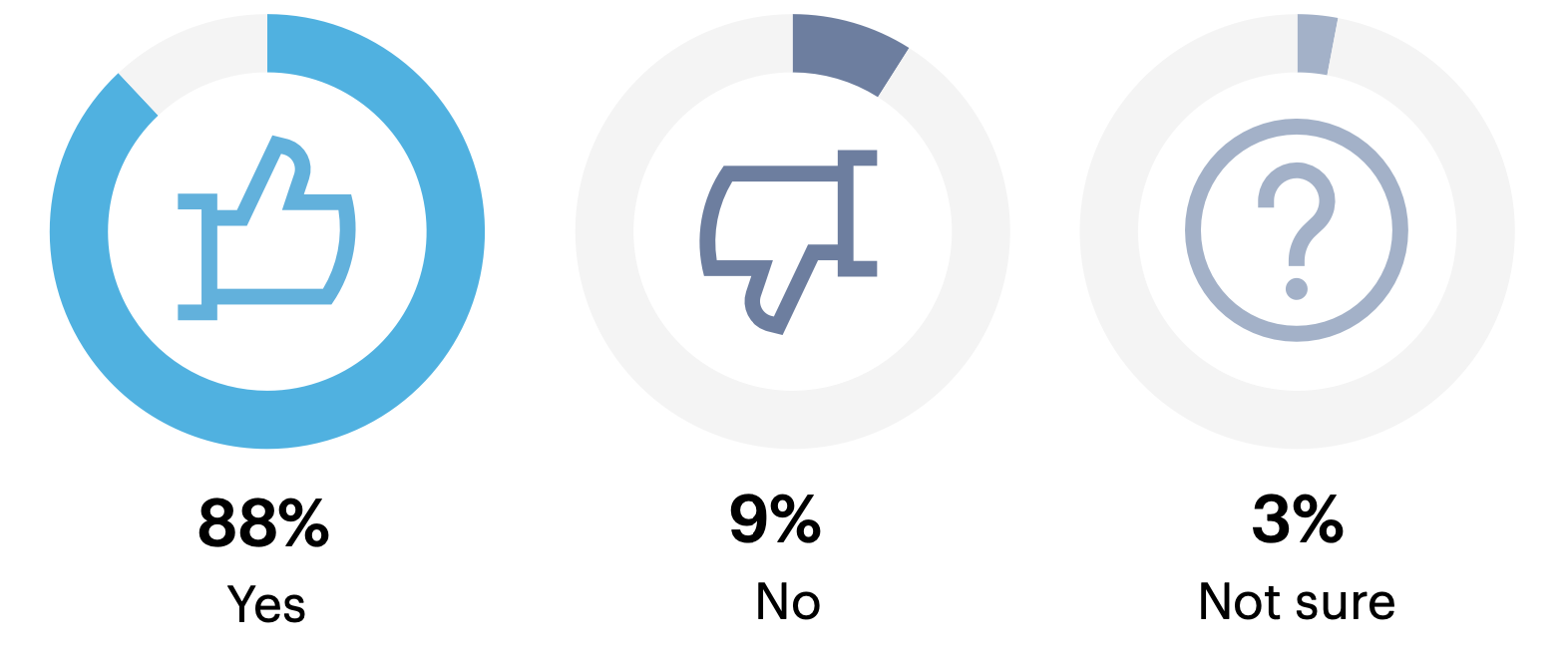
88% of respondents say their organization has a defined digital resilience strategy in place.
n = 300
54% of respondents adopted a digital resilience strategy in response to being hit by a cyberattack. 51% say the looming threat of an attack impacted their decision.
What led your organization to adopt a digital resilience strategy?

Digital resilience can determine the future of companies.
This is more important than ever due to innovation among bad actors.
All leaders have or are building a cybersecurity response plan, and plans vary depending on the type of attack
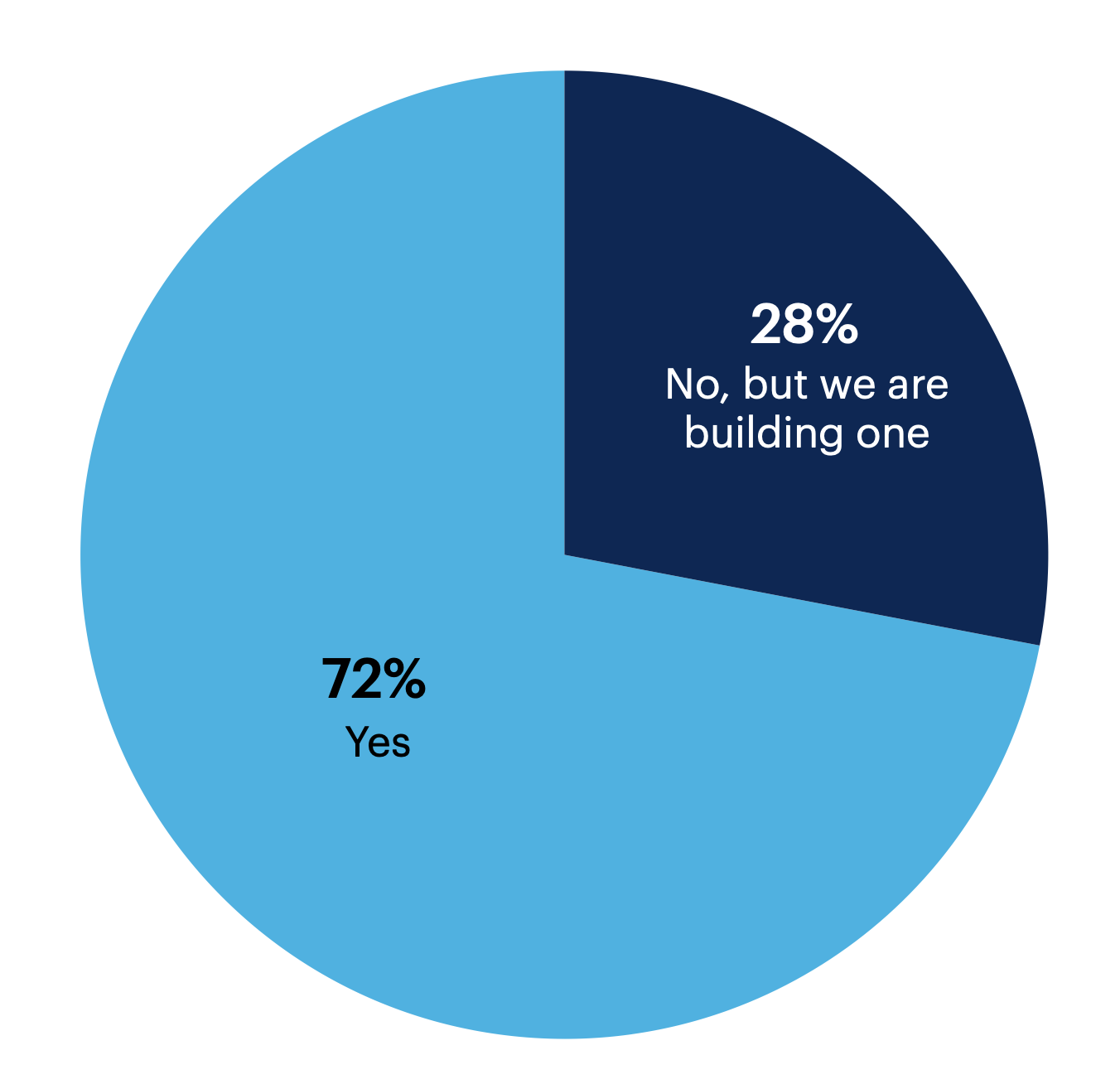
72% of respondents have a cybersecurity response plan in place and the other 28% are building one.
No, and we aren’t building one 0%
n = 300
Most (53%) of those with a response plan in place have different plans for certain types of attacks. 43% have different plans for every type of attack.
Does your cybersecurity response plan include different plans to respond to specific types of attacks (e.g., DDoS, malware, bad actor, phishing, ransomware)?

n = 217
[Digital resilience is a] complex yet effective method to manage risks.
We still refer to this concept [digital resilience] as business continuity but effectively it is the same idea.
Many are confident in their brand resilience or leadership and are taking steps to further improve their digital resilience
38% are most confident in their reputation and brand resilience, while 24% see most of their resilience in leadership.
Where do you feel your organization’s digital resiliency is the strongest?
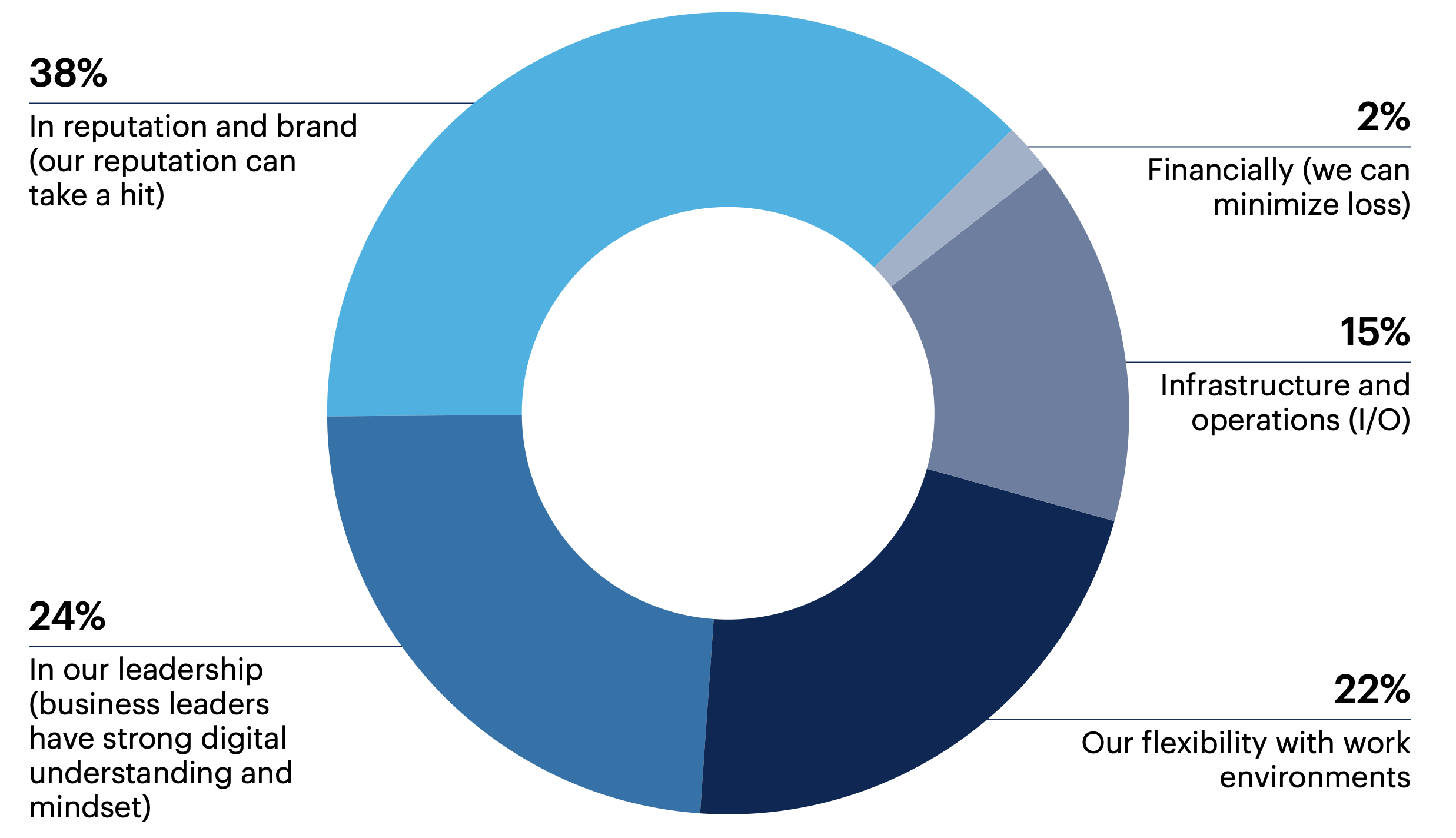
n = 300
We aren’t digitally resilient anywhere 0%, Other 0%
Leaders are taking steps to improve digital resilience by identifying reliable stakeholders (61%), assessing new technologies against business continuity (60%) and defining their most valuable digital assets (55%).
What steps have you taken to improve your organization’s digital resilience?

There must be involvement from all aspects of the organization. Funding and recurring training are also necessary to develop resiliency.
Moving more applications to a loosely coupled SaaS is a mixed blessing. SaaS is by itself pretty resilient, but the number of failure points is also increasing.
While leaders agree digital resilience is required for modern businesses, attaining it can be challenging due to costs, lack of tools and skills gaps
89% of respondents agree that being digitally resilient is a requirement for today’s businesses, with 27% strongly agreeing.
To what extent do you agree or disagree with the following: “In today’s world, being digitally resilient is a requirement for your business.”
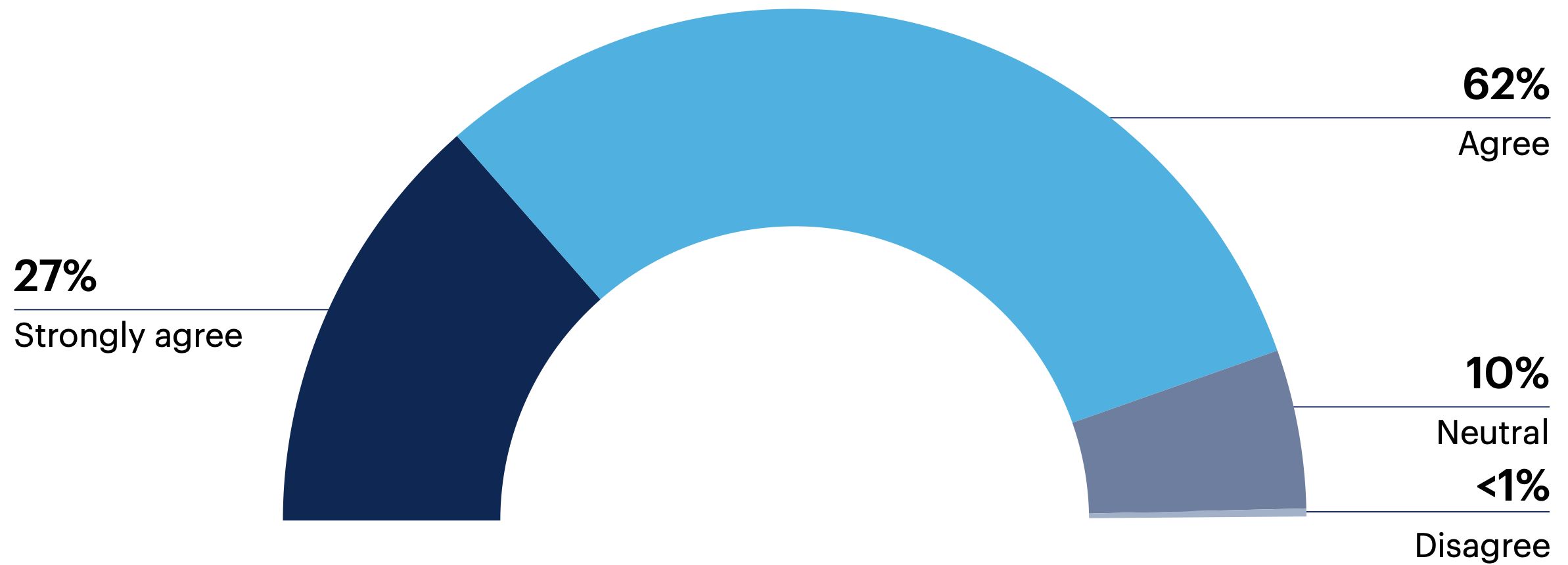
Strongly disagree 0%
n = 300
About half of respondents (51%) believe that the investment needed to become fully digital is one of the biggest challenges with attaining digital resilience. Many also point to challenges with finding the right tools (41%) and skills gaps (41%).
What are the biggest challenges with attaining digital resilience?
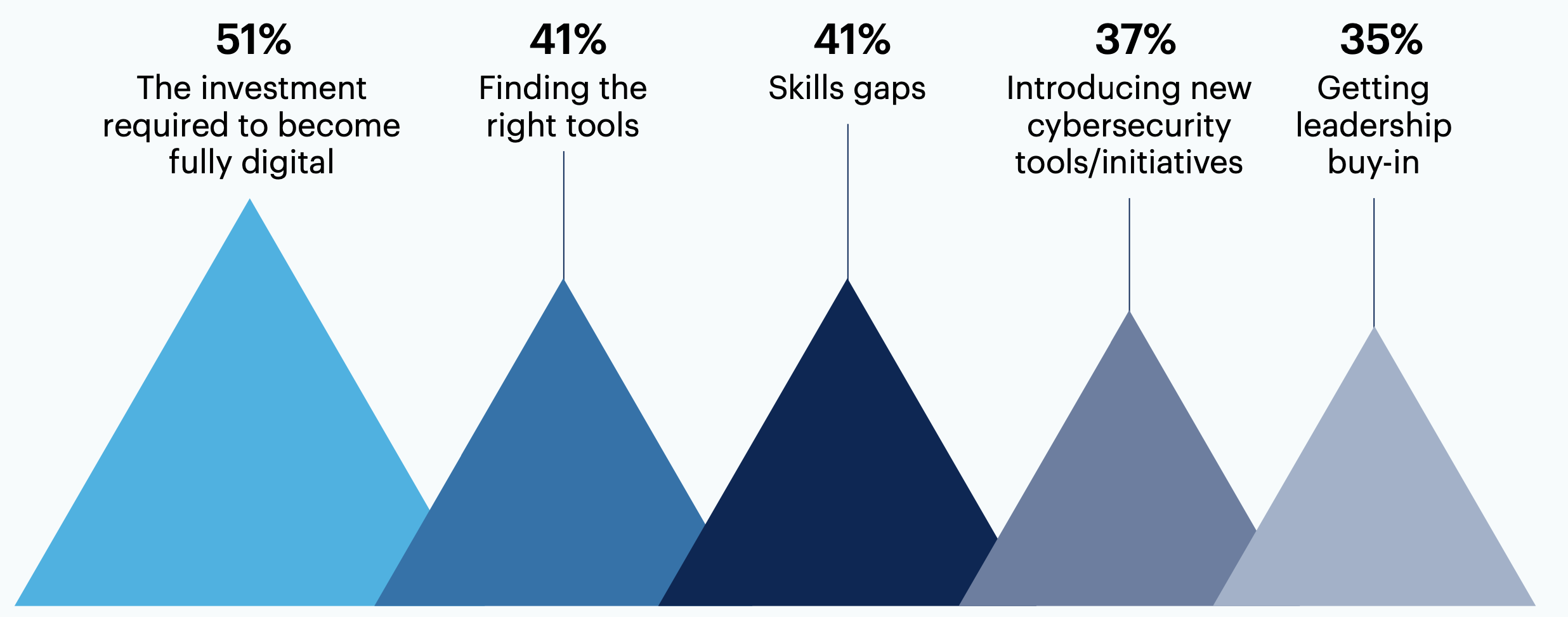
n = 300
Getting teams beyond IT to buy-in 30%, End-user training to avoid risk 28%, Finding the right balance between security and agility (i.e., moving towards a DevSecOps culture) 24%, None of these <1%, Other <1%
Digital resiliency is a mindset that needs to be cultivated and supported by leadership. It cannot be thought of as just another cost.
We have some issues with skill gaps.
Digital resilience is becoming critical and a must have.

Want more insights like this from leaders like yourself?
Click here to explore the revamped, retooled and reimagined Gartner Peer Community. You'll get access to synthesized insights and engaging discussions from a community of your peers.
Respondent Breakdown
